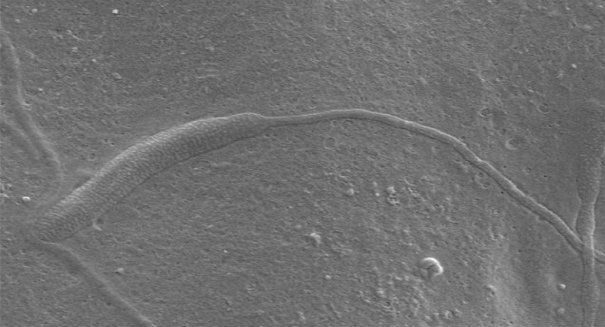Researcher Accidentally Finds Oldest Sperm Ever
Bomfleur sent pictures of his find to Marco Ferraguti, an expert in annelid sperm. Thomas Mörs of the museum was searching for mammal remains when he stumbled upon the fossil of a cocoon.
The annelid cocoon is specific to earthworms or leeches, as well as others related and is particularly hard on the outside to preserve and protect the sperm or eggs released inside.
Benjamin Bomfleur and his colleagues spotted the sperm fragments when they used an electron microscope to examine the inner surface of the cocoon fossil, which had been collected by an Argentinian expedition on Seymour Island, which lies off the Antarctic Peninsula.
But instead of finding plant remains, as Bomfluer was analyzing the contents of the cocoon he noticed what appeared to be an ancient sperm.
The world’s oldest animal sperm. “Who would have thought that’s possible?”
Dr. Bomfleur told the BBC that this was a “remarkable discovery” because “sperms are very transient, very short-lived, with soft cellular structures”.
Scientists may have disclosed the answer to one of the most intriguing questions, even though very few scientists would actually admit they have indeed had this curiosity, namely, to date the oldest traces of sperm.
Experts report that the sperm probably survived as long as it did because of the biology of the creature from which it originated. The cocoon is formed by a sticky mucus that takes several days to harden, but once it does, biological material, such as sperm, can be trapped along its walls. The previous oldest animal sperm was from springtails preserved in Baltic amber, about 40 million years old. “We have uncovered a new type of medium which we think will hold great potential for similar findings in future studies”, Bomfleur said.
McLoughlin said modern crayfish worms are only found in the Northern Hemisphere, but the new discovery suggests that they once had a much bigger range.
Bomfleur said the sperm when found was not completely intact, meaning that they will not be able to learn much about it. But the cocoon, however, contained remnants of clam shells and other small animals.
“Bomfleur explained that though worms themselves don’t fossilize well, sperm can be a better clue as to the creator of a given cocoon”.
Discovery of the ancient fossilized sperm was detailed in the Royal Societyjournal Biology Letters.
“I think we might have a really interesting system here that can be sort of a hidden window to the past”, Jakob Vinther, a student of invertebrate evolution at the University of Bristol, told Nature.
Scientists exploring Seymour Island in Antarctica have made an fantastic discovery. “There could be a lot of potential hidden gems inside those cocoons”.








